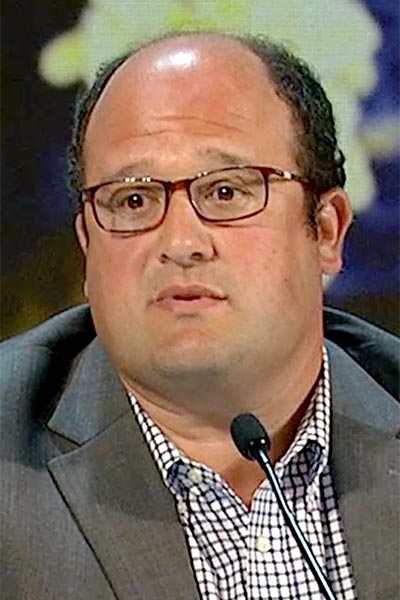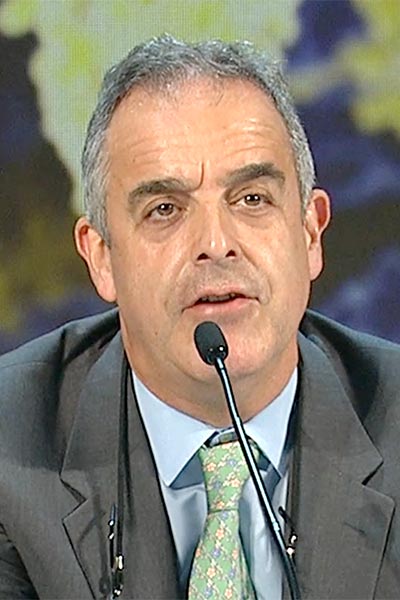Positive results reported from four clinical trials of cellular immunotherapies
//
Estimated Read Time:
A first-in-human trial combining a chimeric antigen receptor T cell therapy (CAR-T) with an mRNA vaccine (CARVac) showed that the combination, called BTN211, had an acceptable safety profile. Furthermore, the CAR-T therapy showed early signs of efficacy both as a monotherapy and in combination with CARVac in patients with testicular and other carcinoembryonic antigen claudin-6 (CLDN6)-positive solid tumors. The phase I trial found more robust engraftment in patients who received the combination treatment than CAR-T cells only.

“CARVac supports CAR-T engraftment, mediates the physiology of graft expansion, and upregulates survival pathways,” said John Haanen, MD, PhD, Netherlands Cancer Institute, Amsterdam, Netherlands. “Some patients showed long-term CAR-T persistence more than 150 days after infusion, and patients with initial partial responses showed further deepening of responses over time.”
Haanen was one of four researchers to present findings during the plenary session Clinical Trials of Cellular Immunotherapies on Sunday, April 10. The session can be viewed on the virtual platform by registered meeting participants through July 13, 2022.
CLDN6 is virtually absent in healthy adult tissues and is expressed in testicular, ovarian, endometrial, lung, and other solid cancers.
Most study patients, 70 percent, had manageable cytokine release storm (CRS) symptoms accompanied by lipase enzyme elevations. The lipase elevations were asymptomatic, and ultrasound found no evidence of pancreatitis.
Among the 14 patients evaluable for efficacy, the investigators observed an overall response rate of 43 percent and a disease control rate of 86 percent at six weeks after infusion, Haanen reported. Deepening of initial partial responses was observed at 12 weeks after infusion.
“We are still looking for the optimal lymphodepletion regimen in patients with solid tumors and are adopting the treatment schedule to reduce the risk of CRS,” Haanen said. “And it is still unclear how often we should give CARVac. Based on our preliminary results, the vaccine is beneficial, but we don’t want to overdose our patients.”
Major glioma tumor response to CAR-T treatment
A second first-in-human trial found manageable toxicity and early signs of clinical activity in patients with H3K27M-mutated diffuse midline glioma (DMG) after sequential intravenous (IV) and intracerebroventricular (ICV) delivery of GD2-CAR T cells.

“This is one of the first CAR-T trials showing durable results in multiple individuals with solid tumors,” said Robbie G. Majzner, MD, Stanford University School of Medicine. “DMG is considered fatal in children and young adults, and we have seen significant clinical, radiographic, and quality-of-life improvements.”
Adverse events included manageable hydrocephalus and manageable CRS following IV infusion.
“There was no evidence of CRS following ICV infusion,” Majzner reported. “We are enrolling an ICV-only arm with no lymphodepletion.”
Future trials will also integrate patient-reported outcomes to get a better picture of treatment impact. Radiographic changes appeared to understate clinical improvement, especially in younger patients.
“We are seeing that small physical changes can have a profound impact on quality of life,” Majzner said.
Cord blood NK cells effective in patients with CD30+ lymphomas
The first trial of natural killer (NK) cells derived from stored umbilical cord blood and treated with the bispecific innate cell engager AFM13, which binds both CD30 on cancer cells and CD16A on NK cells, showed good antitumor response in patients with refractory or relapsed CD30+ lymphomas.
Xenograft mouse models of CD30+ lymphomas showed that precomplexing cord blood NK cells with AFM13 can facilitate CAR-like responses and improve cytotoxic effects.
In the trial, patients received three infusions of AFM13 CAR-like NK cells over three weeks. The primary endpoint was safety and recommended dose of NK cells. Secondary endpoints included response rates, survival, and persistence of infused cells.

“We have seen no CRS, neurotoxicity, or graft-versus-host disease,” reported Yago Nieto, MD, PhD, University of Texas MD Anderson Cancer Center. “The highest dose level in the trial was established as the recommended maximum dose.”
Among the 19 evaluable patients, the overall response rate was 89.5 percent, Nieto reported, and responses were observed in all patients who received the maximum dose level. After a median follow up of nine months, overall survival was 81 percent and event-free survival was 52 percent.
“We see very encouraging activity in heavily pretreated patients with 100 percent responses at the recommended dose,” he said. “This approach warrants further investigation.”
New analysis identifies axi-cel product attributes that associate with efficacy and toxicity in ZUMA-7 trial
Axicabtagene ciloleucel (axi-cel), an autologous anti-CD19 CAR-T cell therapy, has been approved for recurrent or refractory large B-cell lymphoma after two or more lines of systemic therapy. ZUMA-7, a global phase III trial of axi-cel, showed superiority of the therapy versus standard-of-care platinum-based chemotherapy.
Median event-free survival was 8.3 months in patients who received axi-cel and 2.0 months in those who received chemotherapy. The overall response rate was 83 percent and 50 percent with axi-cel and chemotherapy, respectively. The complete response rate was 65 percent and 32 percent with axi-cel and chemotherapy, respectively.

“We saw peak concentration of axi-cel one week after infusion with a steady decline toward baseline levels, which were reached by month three, although a few patients have low but detectable levels at later time points,” said Jason Westin, MD, MS, MD Anderson Cancer Center. “The CAR-T cell levels were associated significantly with both objective responses and with neurological toxicity.”
CAR-T cell expansion did not predict durability of response, Westin said, but the state of CAR-T cells did. Infusions enriched in exhausted T cells were associated with worse outcomes, so the quality of the T cells appeared to matter more than the quantity.
“Optimizing the product composition toward a juvenile phenotype may improve the therapeutic index,” Westin said. “The most direct approach is to start with less beat-up, chemotherapy-exposed T cells by starting treatment after fewer lines of prior therapy.”
[sub-post-content]


